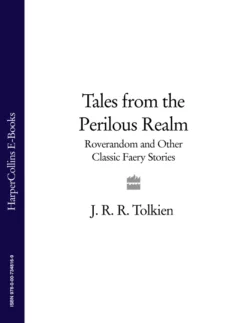Tales from the Perilous Realm: Roverandom and Other Classic Faery Stories

Alan Lee
Тип: электронная книга
Жанр: Фэнтези про драконов
Язык: на английском языке
Стоимость: 938.97 ₽
Статус: В продаже
Издательство: HarperCollins
Дата публикации: 16.04.2024
Отзывы: Пока нет Добавить отзыв
О книге: Available for the first time in one volume, this is the definitive collection of Tolkien’s five acclaimed modern classic ‘fairie’ tales in the vein of ‘The Hobbit’, fully corrected and reset for this edition.The five tales are written with the same skill, quality and charm that made The Hobbit a classic. Largely overlooked because of their short lengths, they are finally together in a volume which reaffirms Tolkien′s place as a master storyteller for readers young and old.• Roverandom is a toy dog who, enchanted by a sand sorcerer, gets to explore the world and encounter strange and fabulous creatures.• Farmer Giles of Ham is fat and unheroic, but – having unwittingly managed to scare off a short-sighted giant – is called upon to do battle when a dragon comes to town;• The Adventures of Tom Bombadil tells in verse of Tom′s many adventures with hobbits, princesses, dwarves and trolls;• Leaf by Niggle recounts the strange adventures of the painter Niggle who sets out to paint the perfect tree;• Smith of Wootton Major journeys to the Land of Faery thanks to the magical ingredients of the Great Cake of the Feast of Good Children.World-renowned Tolkien author and expert, Tom Shippey, takes the reader through the hidden links in the tales to Tolkien′s Middle-earth in his Introduction, and recounts their history and themes.Lastly, included as an appendix is Tolkien′s most famous essay, «On Fairy-stories», in which he brilliantly discusses fairy-stories and their relationship to fantasy.Taken together, this rich collection of new and unknown work from the author of The Children of Húrin will provide the reader with a fascinating journey into lands as wild and strange as Middle-earth.